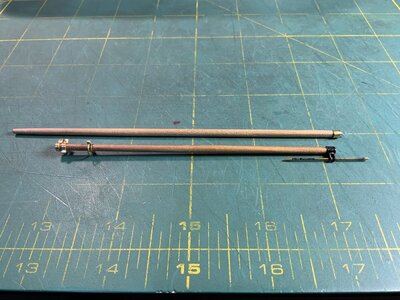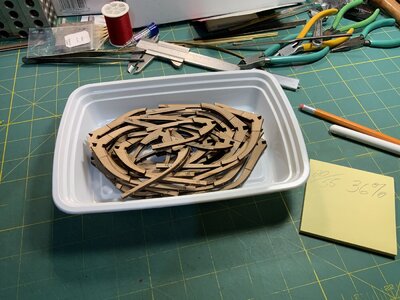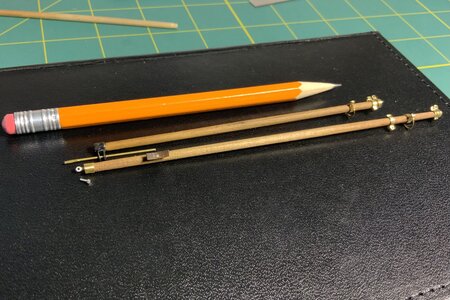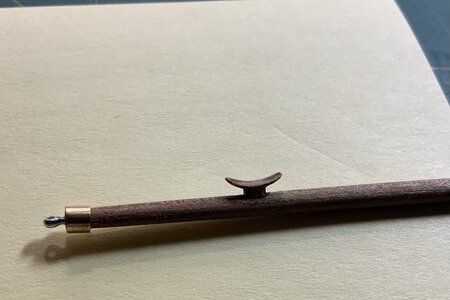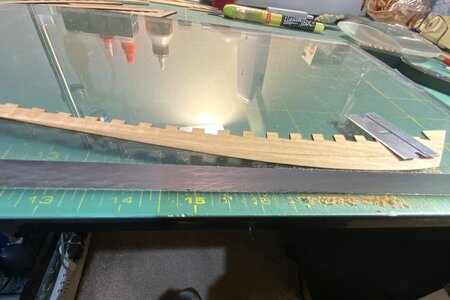Hi Alf. I suppose you will know: Keep in mind that the MS Lankford drawing are in scale 1:64. For the YQ scale of 1:72 you have to calculate it by 0.8889.
Jenson gives 6"-8"-6" and MS Lankford 3/32"-1/8"-3/32" in scale 1:64.
I am going to turn it off to those measurements in 1:72: 2.1mm-2.8mm-2.1mm = Jenson's

. That's 5.3/64"-7/64"-5.3/64". And that's MS Lankford x 0.8889.

All those Imperials */8, */16", */32", */64" ........... Luckily I made myself a excel-file, so I can communicatie with you in "-talk.

Indeed: 138-5 is much to thick.
Regards, Peter




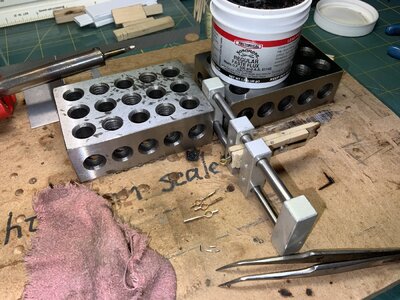
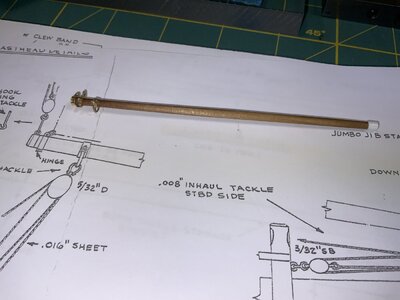
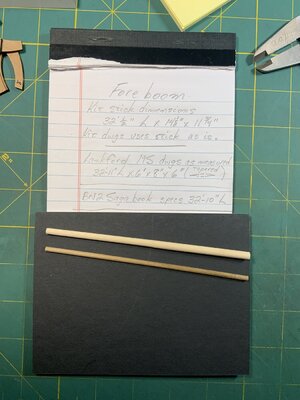

 The base keel, well along, is hanging up on the wall on a picture hook safely tied up and out of the way. I finally got the traveler horse end engineered for the Jumbo Jib Boom so the boom is finished and set aside till needed. I've started making bands for the Foreboom and engineered the gooseneck parapharnalia using a 1:12 scale automotive banjo fitting I had on hand from an earlier Lotus 49 project. I think I deserve a couple ounces of a nice sweet Moscato.
The base keel, well along, is hanging up on the wall on a picture hook safely tied up and out of the way. I finally got the traveler horse end engineered for the Jumbo Jib Boom so the boom is finished and set aside till needed. I've started making bands for the Foreboom and engineered the gooseneck parapharnalia using a 1:12 scale automotive banjo fitting I had on hand from an earlier Lotus 49 project. I think I deserve a couple ounces of a nice sweet Moscato.